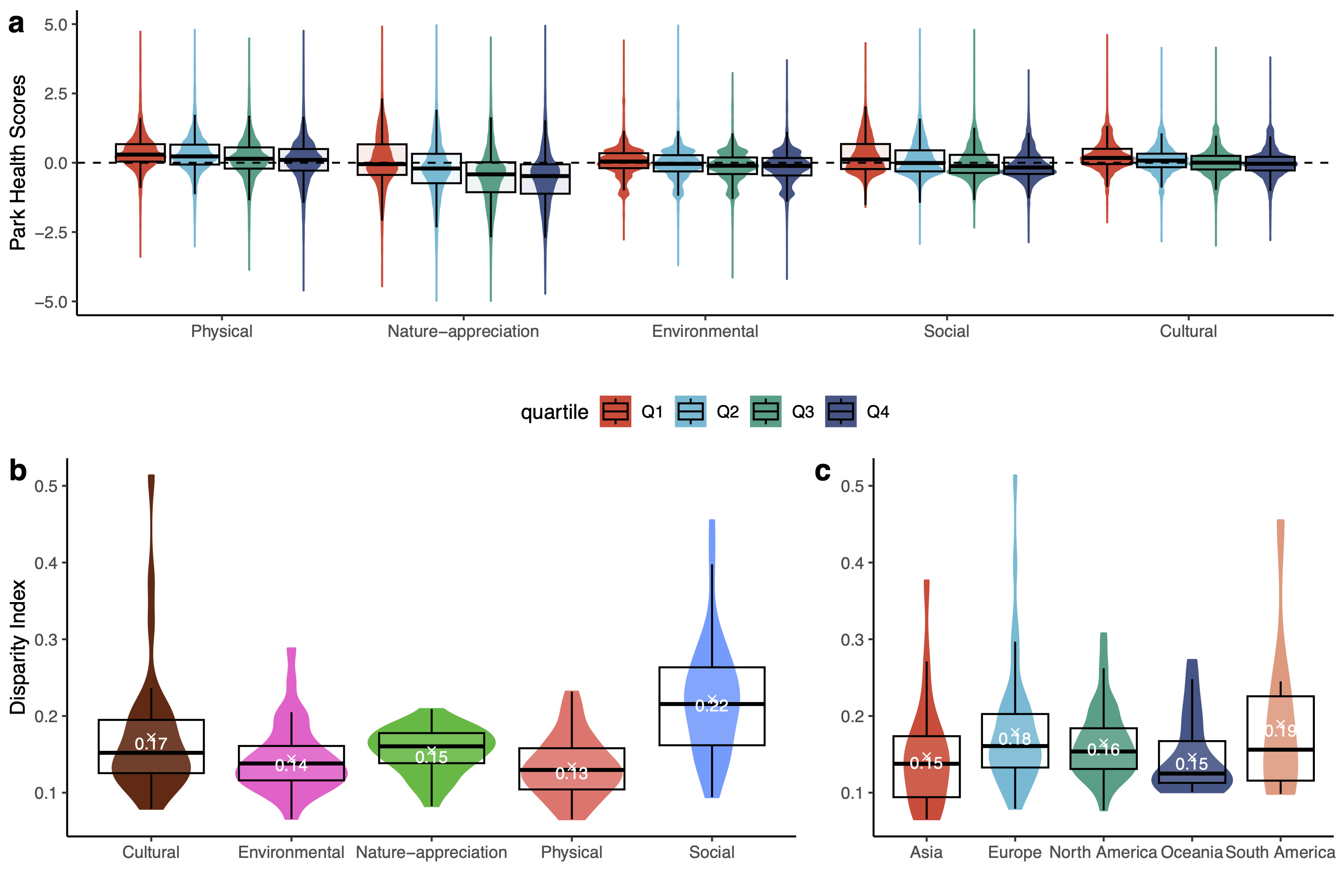Understanding the Potential of Urban Parks to Promote Well-being
Urban parks are vital public health assets, providing citizens to recreate, socialize, and perform their hobbies. However, their health benefits are rarely understood through the range of activities they support. A King’s College London and Nokia Bell Labs study published in Nature Cities, investigates parks’ qualities in a global analysis of more than 23,000 parks in 35 cities on five continents. The study assesses how well parks support health-promoting activities and where they fall short. The researchers identified six types of health-related activities that parks can support:
- Physical (e.g., walking, biking, sports)
- Nature appreciation (e.g., birdwatching, picnicking)
- Environmental (e.g., gardening, conservation)
- Social (e.g., festivals, volunteering)
- Cultural (e.g., performances, exhibitions)
- Mindfulness (e.g., yoga, meditation)
 Figure: Visualization of the park scores in London for (a) nature appreciation and (b) physical activities. Explore all parks in 35 cities using the interactive visualization. CC-BY Linus Dietz, map data from OpenStreetMap.
Figure: Visualization of the park scores in London for (a) nature appreciation and (b) physical activities. Explore all parks in 35 cities using the interactive visualization. CC-BY Linus Dietz, map data from OpenStreetMap.
How to Measure Parks’ Support for Well-being
The researchers collected all features found in parks (such as benches, ponds, or sports courts) from OpenStreetMap and linked them to activity types. Because the number of tags is large, they used a validated Large Language Model approach to compile a lexicon of 1432 park features and their corresponding health-promoting activities. To score each park, they built statistical models that measure how well a park supports specific health-related activities. These scores show how many health-promoting elements a park has compared with an average park in the same city. To reflect cultural and climatic differences, each model is separate for each city. The validation of the scores was done by comparing them with a dataset of 10 million geolocated Flickr photos taken in parks. Parks with higher scores had more photos of people engaged in the relevant activities.
The approach is first to systematically assess the qualities of parks for wellbeing on a global scale.
Key Findings
- Regional differences in park design priorities: European parks prioritize opportunities for nature appreciation, whereas North American parks are focused around physical activities.
- Spatial gradient: Inner-city parks consistently achieve higher scores across all activity categories compared to peripheral parks.
- Inequality patterns: The degree of inequality in park activity scores shows no consistent geographic trend across cities, with Copenhagen and Rio de Janeiro exhibiting the greatest disparities and Tokyo, Paris, and Auckland the most equitable offerings. Generally, physical activity infrastructure is fairly evenly distributed but features supporting social interaction tend to be concentrated in a few parks.
 Figure: Distribution of park scores by (a) distance quartile to the city center, (b) activity category, and (c) continent. CC-BY Linus Dietz.
Figure: Distribution of park scores by (a) distance quartile to the city center, (b) activity category, and (c) continent. CC-BY Linus Dietz.
Implications
The paper provides actionable insights into the current state of urban parks, enabling the assessment of existing shortcomings and supporting evidence-based decisions for future development. In interviews, park managers and urban designers highlighted that such quantitative evidence can inform decisions about which features to prioritize and can help justify and secure funding for targeted improvements. Furthermore, urban planners can use the park scoring system to identify underserved areas and to prioritize investments that promote more equitable access to high-quality, health-promoting green spaces.
Resources
- Paper: Understanding the Potential of Urban Parks to Promote Well-being. Nature Cities 2025
- Project page
- Interactive Visualization
- Replication package with code and data
